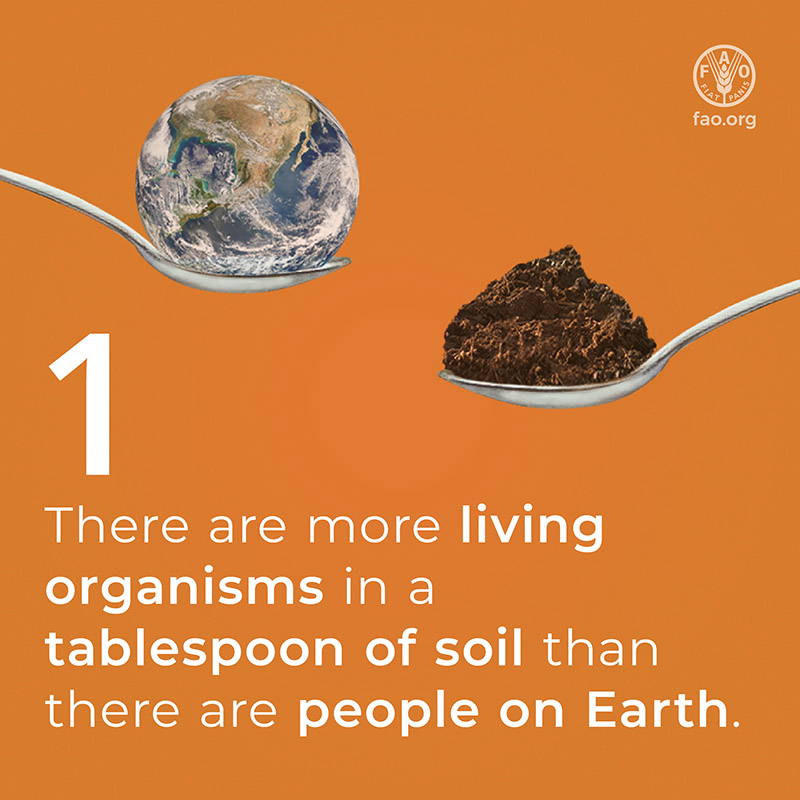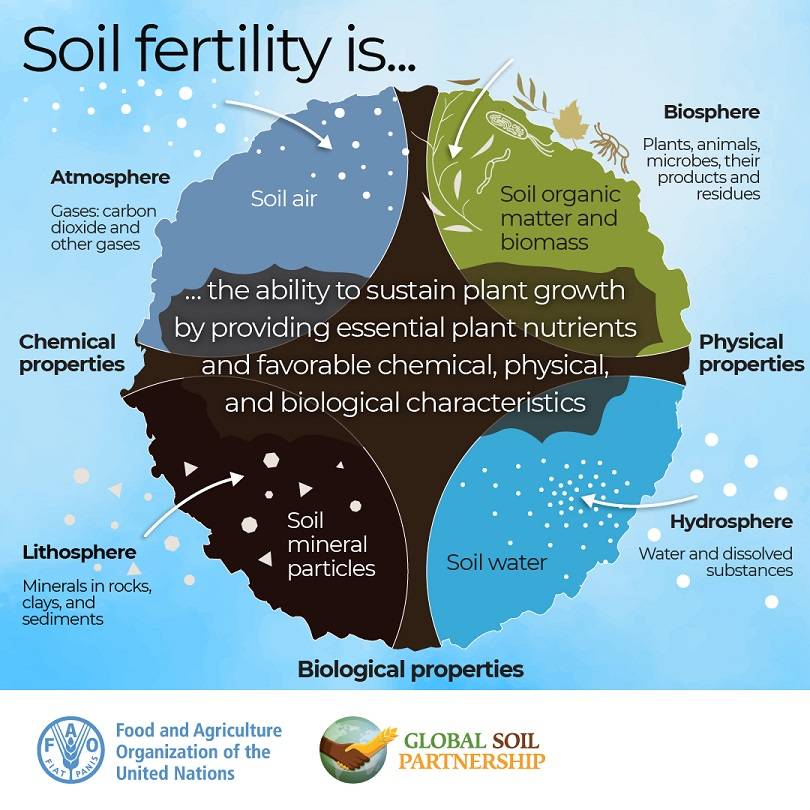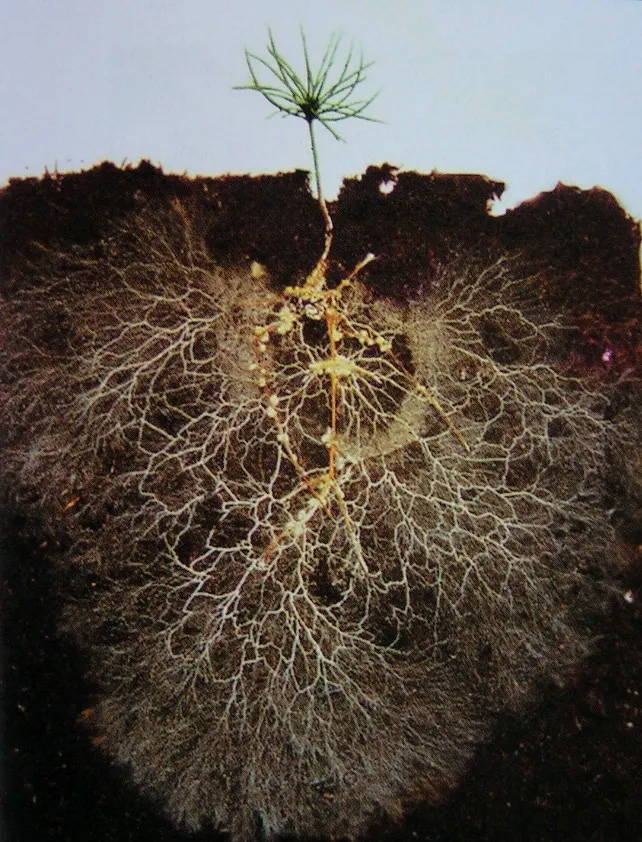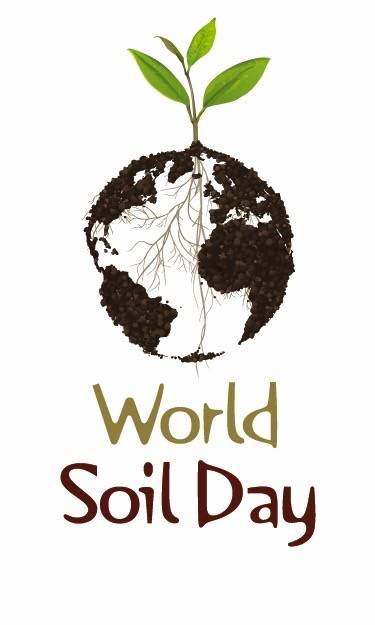In our rush to get a sound bite from Charles Darwin’s lifetime of work, we missed something – we got it wrong, or just heard it wrong.
STRONGER TOGETHER
By an overwhelming majority, the winners and losers on this planet are not determined by “survival of the fittest” but rather by “survival of those who fit". The difference is profound. The individual success of most creatures living in our world is not based on Confrontation – but on Collaboration. And the worldwide symbiosis between plants and the soil microbiome is the best example of this.
Most of us are oblivious to what’s happening beneath our feet. We can be forgiven for this oversight; after all, it’s dark and damp and chilly down there - it just doesn’t seem that hospitable – right? And yet, an overwhelming number of species (most of the biodiversity on Earth) is content and at home down there; out of sight, in the thin layer of soil beneath your feet!
There are more organisms in a single teaspoon of healthy soil than every person living on Earth today. But what are they all doing down there?
The countless organisms that inhabit healthy soils nurture all plants - and plants are the life-sustaining food for everything else living above grade on this planet – including you and me. The living world we see with our eyes would not (could not) exist without the constant toil of the unseen microbial world below our feet.

THE CYCLE OF LIFE & THE G.O.A.T SUPERPOWER
Plants rely on microbes, fungi, and tiny soil fauna to make nutrients, water and soil air available (as required) for their growth, health, and productivity. But where do these helpful soil denizens get their food - what’s in it for them? How are they content to live down there, toiling away in obscurity? The soil microbiome sustains plant life, but what is sustaining the soil microbiome? The answer is beautiful, efficient, sustainable, and elegantly simple; plants feed the soil microbiome, and in return, the microbiome feeds plants And in that process, the thing we call soil is built.
Green plants possess the greatest superpower in the known universe. Plants alone can capture the energy of photons from sunlight and use that never-ending power source to synthesize carbohydrates from carbon dioxide and water. Photosynthesis is the GOAT skill, and plants have been perfecting it for millions of years here on our planet. Every plant (from a rudbeckia to a redwood) produces so much sugar in the chlorophyll in their leaves that there is always more than they need – what do they do with that surplus?

NATURE'S PERFECT PARTNERSHIP
As you and I know, you can’t live on sugar alone – neither can plants. They need more than a dozen macro and micronutrients to build cells, fight-off pathogens, resist environmental stresses, reproduce, and power photosynthesis. Where and how do plants get the nutrients they need (beyond the sugar they make)? If plant roots (as we may have been told) simply extract what they need from the soil – then clearly, at some point, everything they need will be exhausted. That ‘use it up until it’s all gone’ idea doesn’t seem sustainable - doesn't seem natural. There must be more to this, and the surplus sugar plants create is the key.
Here’s the simple solution that Nature has perfected over time. The plumbing in plants has evolved to pump the surplus sugar created in leaves down into the roots via a thin layer of specialized cells just below the bark: the phloem. Via this network of specialized cells, surplus sugar from the leaves is delivered down into the roots, where it is exuded into the soil to feed selected specialist microbes and fungi. And there in the dark, these well-fed microbes go about sourcing (or converting from raw materials) all the macro and micronutrients that their plant benefactors need. A profound, beautiful, and efficient partnership; a symbiosis between solar-powered plants and an army of microbes and fungi (who will never see the sun) sustains all the life on Earth that we see around us daily.

A GRAND COLLABORATION
Using their surplus carbohydrate as currency, plants establish many partnerships in the soil; one of the most essential is the symbiosis with a group of specialized soil explorers called mycorrhizal fungi. At the invitation of the plant, mycorrhiza hook-up to the roots. Supplied with carbohydrate energy from the root, the filaments (hyphae) of mycorrhizal fungi rapidly expand into the soil - creating a living pipeline to and from the root. In exchange for a sugar meal, mycorrhizal fungi deliver the water and nutrients their plant host needs. And unless the soil is disturbed, this partnership will remain permanent.
It makes for compelling Discovery Channel content to watch an apex predator strut and fret his hour upon the stage. But when the dust settles, perhaps it’s wise to consider that none of that drama could play out were it not for the unseen and unheard labours of our world’s majority of inhabitants. Without the Earth’s great and silent soil collaborators, there would be no stage for us to strut or fret upon.
Tread carefully - an entire universe of life silently supports your every step.


Learn More On our youTube Channel
Root Rescue Learning Channel

